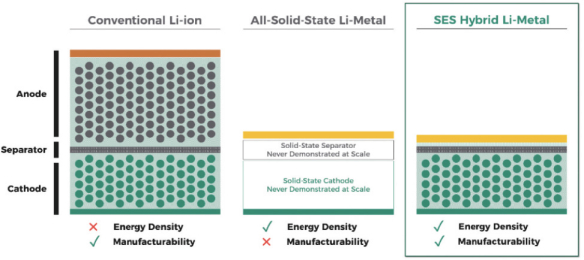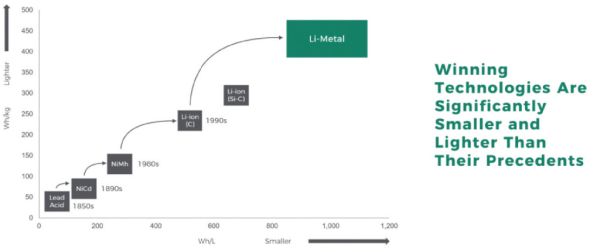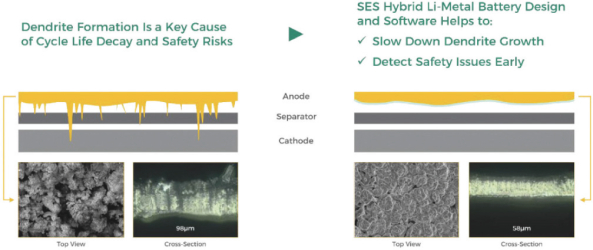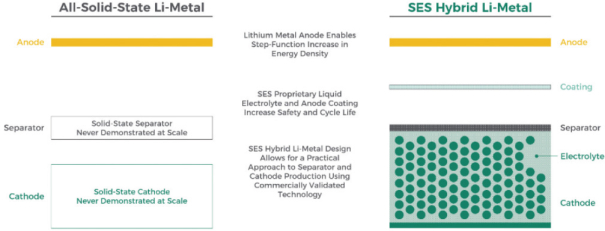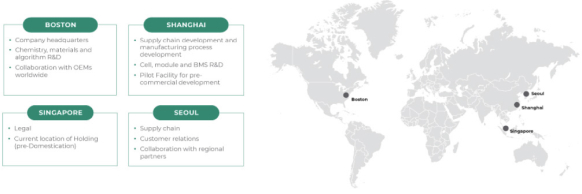repairs and spare parts to resume operations, which may not be available when needed. Additionally, unexpected malfunctions of the manufacturing facility equipment may significantly affect the intended operational efficiency, thus materially and adversely affecting our business, financial condition and operating results.
The production of our facilities will also require us to hire and train highly-skilled personnel to operate such facilities, including engineers, workers, and indirect laborers. Recruiting and training such skilled staff will take significant cost and time, and an inability to do so timely or at all will inhibit the successful operation of these facilities, thus negatively affecting our business. In addition, the manufacturing of our
Li-Metal
batteries at our Pilot Facility and other facilities will require us to obtain various production licenses and permits, receive the necessary internal approvals from our customers regarding specifications and enter into agreements for the supply of raw materials, components and manufacturing tools and supplies. If we do not complete such steps timely, our manufacturing timeline or output could be significantly delayed or inhibited.
Finally, the production of our
Li-Metal
batteries at scale with our forecasted cost advantage, compared to conventional
Li-ion
cells, will require us to achieve rates of throughput, use of electricity and consumables, yield, and rate of automation demonstrated for mature batteries and battery material. As we have not produced
Li-Metal
batteries at scale, our ability to achieve such rates is untested and subject to significant constraints and uncertainties. Operational performance and costs can be difficult to predict and are often influenced by factors outside of our control, such as, but not limited to, environmental hazards and remediation, costs associated with commissioning of machines, damages or defects in electronic systems, industrial accidents, fire and seismic activity and natural disasters, and problems with equipment vendors. Should operational risks materialize, they may result in lower yield, which would negatively affect our revenue growth and profitability as projected. Additionally, they could cause personal injury to or death of workers, the loss of manufacturing equipment, damage to manufacturing facilities, monetary losses, delays and unanticipated fluctuations in production, environmental damage, administrative fines, increased insurance costs and potential legal liabilities, all of which could have a material adverse effect on our business, financial condition, operating results and prospects.
We have pursued and may continue to pursue JDAs and other strategic alliances, which could have an adverse impact on our business if they are unsuccessful.
We have entered into strategic alliances, and may in the future enter into additional strategic alliances. For example, as further discussed in “
,” we have JDAs with GM, Hyundai and Honda. We expect to form strategic joint ventures with one or more battery makers or OEMs to support the
build-out
of our Expansion I Facility.
While offering potential benefits, these current and future strategic alliances with battery manufacturers, OEMs and others could subject us to a number of risks, including risks associated with sharing proprietary information,
non-performance
by our partners and costs of establishing and maintaining new strategic alliances, any of which may materially and adversely affect our business. We may have limited ability to monitor or control the actions of our partners and, to the extent any of them suffers negative publicity or harm to their reputation from events relating to their business, we may also suffer negative publicity or harm to our reputation by virtue of our association with them. For example, if we rely on our partners’ manufacturing facilities, those operations would be outside of our control. We could experience delays if our partners do not meet agreed-upon timelines or experience capacity constraints, and in turn, we could lose customers and face reputational harm.
Further, there is risk of potential disputes with any partners with whom we collaborate, and we could be affected by adverse publicity related to our partners, whether or not such publicity is related to their collaboration with us. Our ability to build a premium brand successfully could also be adversely affected by perceptions about the quality of our partners’ products. In addition, because we rely on our partners and third parties to meet our quality standards, there can be no assurance that we will successfully maintain quality standards. Any of the foregoing could adversely affect our business, financial condition, operating results and prospects.
